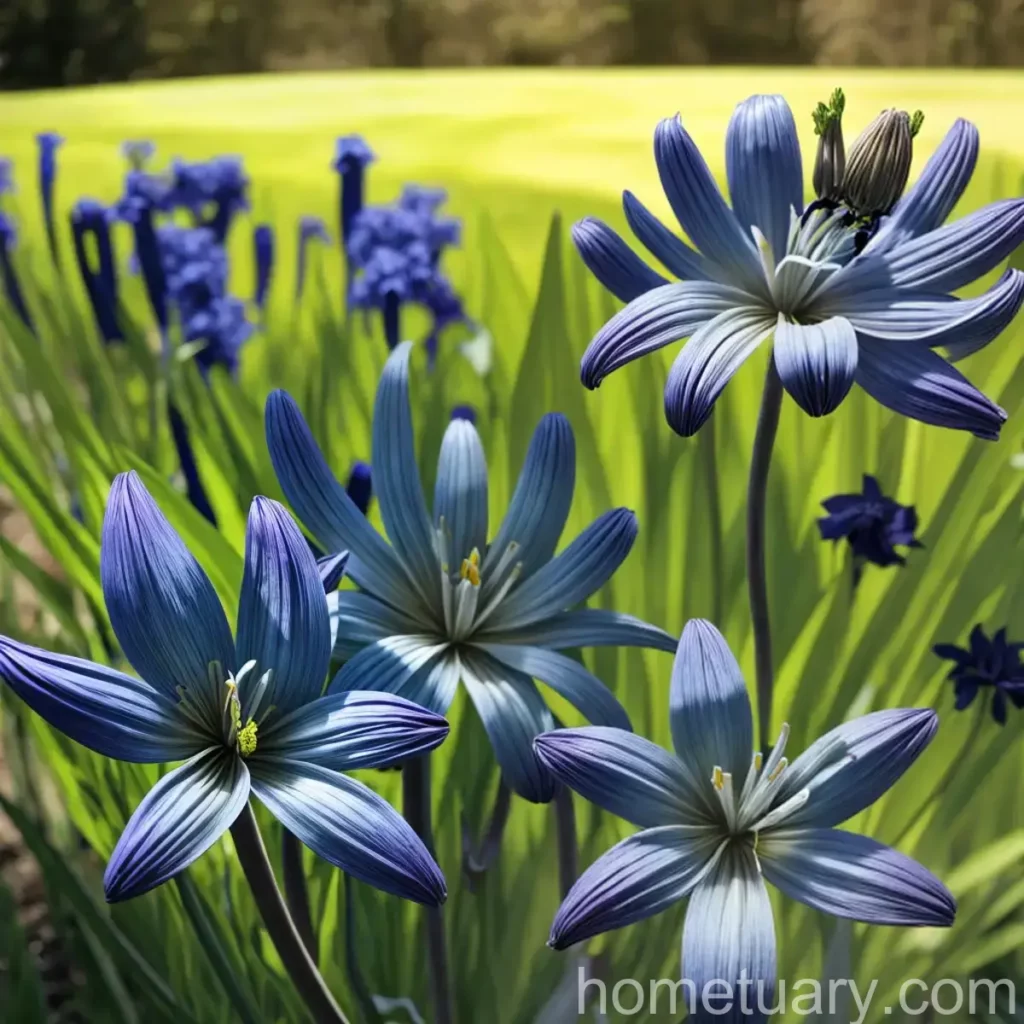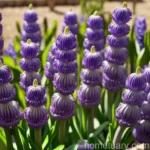Large Camas (Camassia leichtlinii)
Large camas (Camassia leichtlinii) is a striking perennial plant that belongs to the Asparagaceae family. This plant is native to North America and is known for its stunning blue-violet flowers that bloom in the late spring to early summer. Large camas has gained popularity not only for its aesthetic appeal but also for its cultural and ecological significance. In this comprehensive guide, we will explore the key aspects of growing and caring for large camas, its uses, ecological importance, and much more.
What is Plant
Scientifically known as Camassia leichtlinii, large camas is a herbaceous perennial plant that is native to western North America. It is a bulbous plant with long, narrow leaves and tall flower spikes that bear clusters of blue-violet flowers. Large camas is noted for its cultural significance amongst indigenous communities and its vital role in supporting pollinators and wildlife.
Key Takeaways
Before delving into the details of large camas, let’s summarize the key takeaways of this plant:
- Common Name: Large camas
- Scientific Name: Camassia leichtlinii
- Family: Asparagaceae
- Blooms: Late spring to early summer
- Flower Color: Blue-violet
- Habitat: Native to western North America
- Cultural Significance: Historically used as a food source by indigenous peoples
Now, let’s explore the various aspects of growing and caring for large camas.
Culture
Large camas is a relatively low-maintenance plant, making it a great addition to gardens and natural landscapes. Understanding the plant’s cultural requirements is essential for its successful growth and development. Here are some key cultural aspects to consider:
Uses
Large camas holds both historical and modern-day uses:
- Historical Use: Indigenous communities traditionally used large camas as a food source due to its edible bulbs. The bulbs were an important staple in their diets and were harvested in the wild.
- Modern Use: In contemporary settings, large camas is primarily cultivated for its ornamental value. It adds a touch of natural beauty to gardens and landscapes, especially in native plant and wildflower gardens.
Water
Proper irrigation is crucial for the health and vigor of large camas plants. While they can tolerate some dry spells, consistent moisture is beneficial, particularly during the growing season. However, it is important to ensure that the soil is well-draining to prevent waterlogging, which can be detrimental to the bulbs.
Sunlight
Large camas thrives in full sun to partial shade. When grown in partial shade, it is essential to ensure that the plant receives several hours of direct sunlight each day to support robust flowering.
Fertilizer
Large camas generally doesn’t require excessive fertilization. A balanced, all-purpose fertilizer can be applied in early spring as new growth emerges. However, it’s crucial to avoid excessive nitrogen, as this can promote lush foliage at the expense of flowers.
Soil
The plant is adaptable to various soil types, but it thrives in well-draining, fertile soil. A slightly acidic to neutral pH range is optimal for the growth of large camas. Amending the soil with organic matter, such as compost, can enhance its structure and fertility.
Pruning
Pruning large camas is minimal. Deadheading spent flowers can promote tidiness and redirect the plant’s energy back into bulb development. However, it’s important to leave some spent flowers if you want the plant to self-seed and naturalize in the garden.
Propagation
Large camas can be propagated through both seeds and offsets. Seeds can be collected from mature flower spikes and sown in prepared soil. The offsets, or bulblets, can be carefully divided from mature plants in the fall and replanted in suitable locations.
Container Popularity
While large camas is often grown in garden beds, it can also thrive in containers. This is particularly beneficial for gardeners with limited space or those who want to showcase the plant on patios, decks, or balconies.
Container Common Diseases
When growing large camas in containers, it is essential to watch for potential diseases, such as bulb rot and fungal infections. Proper drainage and regular monitoring can help prevent these issues.
Disease Diagnosis
Large camas is generally resistant to most diseases. However, occasional fungal diseases and bulb rot may occur, especially in conditions of excessive moisture and poor air circulation. Prompt diagnosis and treatment can help mitigate these concerns.
Common Pests
Large camas is relatively resistant to pests due to its toxicity. However, some potential pests, such as slugs and snails, may occasionally feed on the foliage. Vigilance and appropriate pest control measures can help manage these issues without causing harm to the plant.
Botanist’s Tips
For successful large camas cultivation, consider the following tips:
1. Ensure well-draining soil to prevent waterlogging.
2. Provide ample sunlight for optimal flowering.
3. Monitor for signs of bulb rot and fungal diseases, especially in damp conditions.
4. Incorporate large camas into native plant landscapes to support local pollinators and wildlife.
Fun Facts
- Large camas bulbs were historically harvested by native tribes and were a significant food source, often roasted or boiled.
- The plants are known for their distinctive blue-violet flowers, adding a splash of color to natural landscapes.
Links to External Resources
For further information on large camas, here are some useful resources:
1. Pacific Bulb Society – Camassia leichtlinii
2. Royal Horticultural Society – Camassia leichtlinii
In the subsequent sections, we will delve deeper into the various characteristics, habitat, and ecological significance of large camas, offering a comprehensive understanding of this captivating plant.
In the next parts of the blog post, I will expand on the characteristics of large camas, its role in the ecosystem, and its cultivation in different habitats. Let me know if you would like me to continue with the remaining sections.















